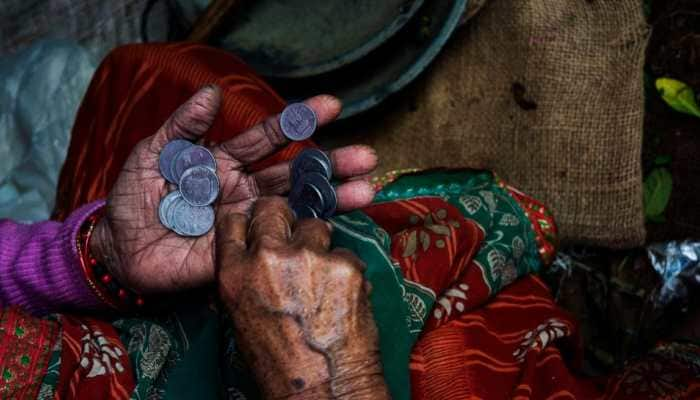World Cancer Day 2017: Most common types of cancer and prevention tips!
It is the leading cause of death worldwide and accounted for 8.2 million deaths (22% of all NCD deaths) in 2012, as per WHO statistics.
Trending Photos
)
New Delhi: Cancer is one of the most dreaded 'C' word in the world. Unfortunately, along with being feared, it is also one of the most common reasons behind the rising mortality rate across the globe.
The World Health Organisation (WHO) defines cancer as “the uncontrolled growth and spread of cells. It can affect almost any part of the body. The growths often invade surrounding tissue and can metastasize to distant sites.”
Even though one-third of all cancer cases are preventable, it is still very much prevalent. It is the leading cause of death worldwide and accounted for 8.2 million deaths (22% of all NCD deaths) in 2012, as per WHO statistics.
Because prevention is known as the best cure, there are a few WHO-approved guidelines that one should follow as preventive measures for cancer. This means avoiding a few things that many have chosen as a lifestyle and some that most of face on a daily basis. They are:
- Tobacco – Responsible for causing an estimated 22% of cancer deaths per year
- Physical inactivity – There is a link between overweight and obesity to many types of cancer such as oesophagus, colorectum, breast, endometrium and kidney.
- Alcohol use – 22% of mouth and oropharynx cancers in men are attributable to alcohol whereas in women the attributable burden drops to 9%.
- Infections – Infectious agents are responsible for almost 22% of cancer deaths in the developing world and 6% in industrialized countries.
- Environmental pollution – Environmental pollution of air, water and soil with carcinogenic chemicals accounts for 1–4% of all cancers.
- Occupational carcinogens – More than 40 agents, mixtures and exposure circumstances in the working environment are carcinogenic to humans and are classified as occupational carcinogens.
- Radiation – Residential exposure to radon gas from soil and building materials is estimated to cause between 3% and 14% of all lung cancers, making it the second cause of lung cancer after tobacco smoke.
World Cancer Day is observed annually on February 4. This year, the theme is “We can. I can.” as a part of a three-year campaign (2016-2018), to explore how everyone – as a collective or as individuals – can do their part to reduce the global burden of cancer.
World Cancer Day is organized by the Union for International Cancer Control UICC), is an opportunity to highlight the wide range of actions needed to effectively prevent, treat and control the many forms of cancer.
It was founded by UICC to support the goals of the World Cancer Declaration, written in 2008, with an aim to significantly reduce illness and death caused by cancer by 2020.
Since cancer is the leading cause of death across the globe, below is a list of ten most common types of the disease as a part of our contribution towards raising awareness. Have a look!
1. Non-melanoma skin cancer:
This form of cancer affects more than 1 million people a year. Skin cancer is most commonly caused because of excessive exposure to the sun.
2. Lung cancer:
The most common cause of lung cancer is smoking. Lung cancer strikes the cells inside the lining of the lungs. There are two primary types of lung cancer — small cell and non-small cell lung cancer. Lung cancer claims nearly 160,000 lives annually.
3. Breast cancer:
This form of cancer victimizes more women than men. It is by far the most common cancer in women. While the overwhelming majority of breast cancer patients are women, about 1,900 cases are diagnosed in men each year.
4. Prostate cancer:
Just over 192,200 cases of prostate cancer are diagnosed annually.It is the most common cancer to affect men, most often men over age 50. This type of cancer develops in the tissues inside the prostate gland.
5. Colorectal cancer:
Also known as bowel cancer, is the development of cancer from the colon or rectum (parts of the large intestine).
6. Bladder cancer:
The bladder can be affected by cancer cells that develop within its tissues. The most common type is transitional cell carcinoma, but others, such as adenocarcinomas and squamous cell carcinomas, may also occur, depending on which bladder cells are involved. It is any of several types of cancer arising from the epithelial lining (i.e., the urothelium) of the urinary bladder.
7. Melanoma:
Predicted to strike close to 68,720 people annually, melanoma is another type of skin cancer. Also known as malignant melanoma, is a type of cancer that develops from the pigment-containing cells known as melanocytes. Occurring more commonly on the back, sometimes they develop from a mole with concerning changes including an increase in size, irregular edges, change in color, itchiness, or skin breakdown.
8. Non-Hodgkin lymphoma:
Affecting 65,980 people, this is the term for a number of different but related cancers involving white blood cells, or lymphocytes. Frequently characterized by swollen lymph nodes, fevers, and weight loss, it's symptoms include enlarged lymph nodes, fever, night sweats, weight loss, and feeling tired. Other symptoms may include bone pain, chest pain, or itchiness.
9. Kidney cancer:
Kidney cancer is diagnosed in more than 49,000 people each year. Also known as renal cancer, is a type of cancer that starts in the cells in the kidney. The two most common types of kidney cancer are renal cell carcinoma (RCC) and transitional cell carcinoma (TCC, also known as urothelial cell carcinoma) of the renal pelvis.
10. Leukemia:
Leukemia is a group of cancers that usually begin in the bone marrow and result in high numbers of abnormal white blood cells. The four main types of leukemia are acute myeloid leukemia, acute lymphocytic leukemia, chronic lymphocytic leukemia, and chronic myeloid leukemia.
Stay informed on all the latest news, real-time breaking news updates, and follow all the important headlines in india news and world News on Zee News.
Live Tv







)
)
)
)
)
)
)
)
)
)
